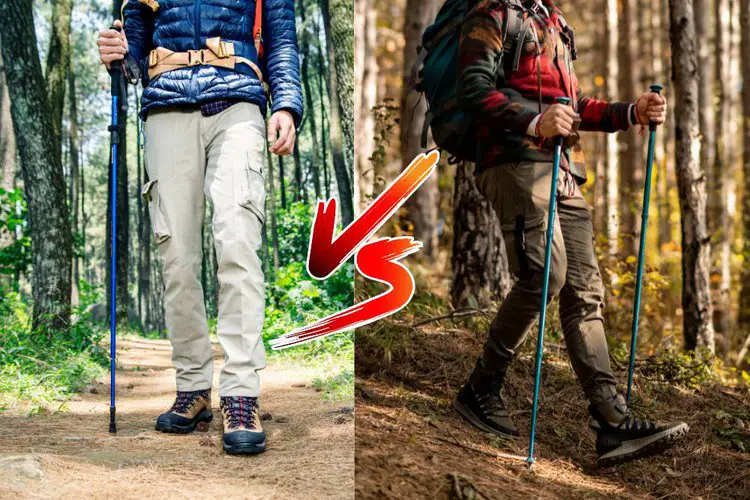Hiking is a wonderful activity that can be enjoyed by people of all ages and fitness levels.
While it may seem like a simple activity, there are many factors that can impact your overall experience on the trail, including the gear you use.
One important piece of equipment that can greatly improve your hiking experience is a hiking pole.
Hiking poles can help reduce strain on your joints, improve balance, and provide extra support on rough terrain. But when it comes to using hiking poles, is it better to use one or two?
In this article, we’ll explore the differences between using one hiking pole versus two, and when it may be beneficial to use one or the other.
Key Takeaways:
- Hiking with one pole can provide some benefits, such as reduced weight and more freedom of movement, but also has some drawbacks, such as reduced stability and balance.
- Hiking with two poles can provide more stability and balance, but may also add more weight and limit freedom of movement.
- The number of hiking poles you use depends on your personal preferences, the terrain and conditions you’ll be hiking in, and your fitness level and experience.
- One pole may be sufficient for hiking on flat or easy terrain, while on steep or technical terrain, two poles can provide more support and stability.
Contents
Using One Hiking Pole
Using one hiking pole is a common practice among hikers, especially those who are just starting out or who prefer a more minimalist approach to their gear.

One of the primary benefits of using one hiking pole is that it can help reduce the strain on your joints and muscles, particularly in your lower body.
By using a hiking pole, you can shift some of your weight onto the pole, which can help reduce the impact on your knees and ankles, especially on descents.
- SUPER COMFORTABLE:EVA Foam Handle with wrist strap, sweat-absorbent, skid resistance groove...
- ULTRALIGHT AND STURDY: Ultralight Shaft made of aircraft grade 7075 aluminum alloy, extremely...
- QUICKLY LOCK: New Quick Lock System, adjustable length from 43.3" to 49.2", with measuring scale to...
Last update on 2023-11-11 / Affiliate links / Images from Amazon Product Advertising API
Another benefit of using one hiking pole is that it can provide extra stability and support on uneven terrain.
With one hiking pole, you can use it to test the stability of the ground ahead of you and provide extra support if needed.
This can be particularly useful on rocky or unstable terrain, where you may need an extra point of contact to maintain your balance.
Pros of using one hiking pole
- One hiking pole can be more lightweight and easier to carry than two, making it a good option for shorter or less strenuous hikes.
- It can be easier to navigate through narrow or steep trails with just one hiking pole, as you have one free hand to hold onto rocks or trees for balance.
- One hiking pole can be a good option for hikers who have limited mobility or balance, as it can provide additional support and stability.
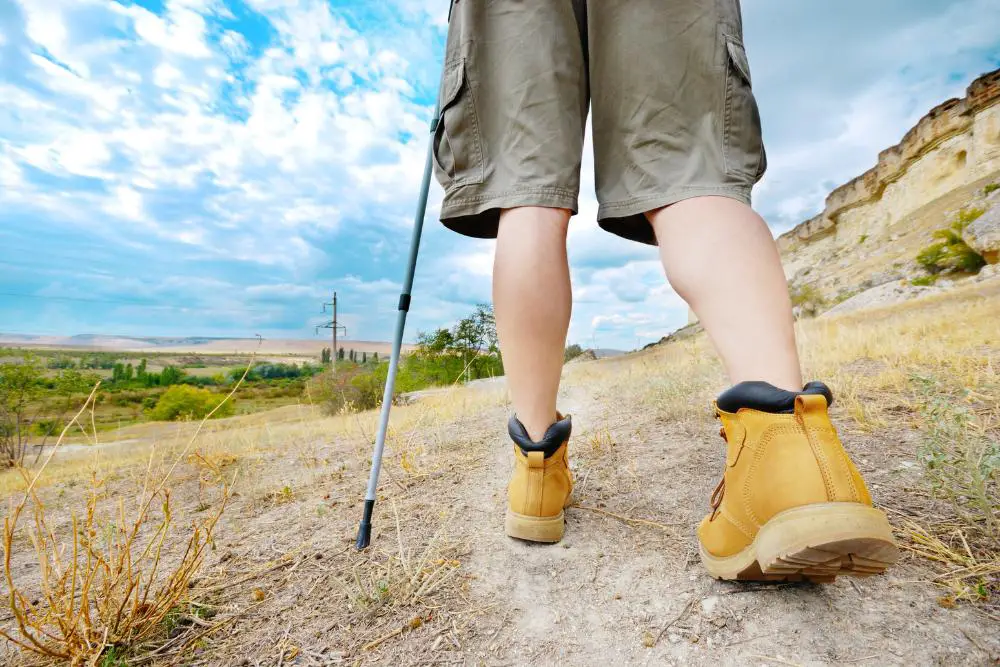
Cons of using one hiking pole
- With just one hiking pole, you won’t have as much balance and stability as you would with two. This can be a concern if you’re hiking on uneven terrain or in challenging weather conditions.
- Using only one hiking pole can put more strain on your body, as you’ll be relying more heavily on one side of your body. This can lead to muscle fatigue or even injury over time.
Using Two Hiking Poles
Using two hiking poles is another common practice among hikers, particularly those who have been hiking for a while or who are looking for extra support and stability on the trail.
One of the primary benefits of using two hiking poles is that it can help distribute your weight more evenly across your body, which can reduce the strain on your joints and muscles.
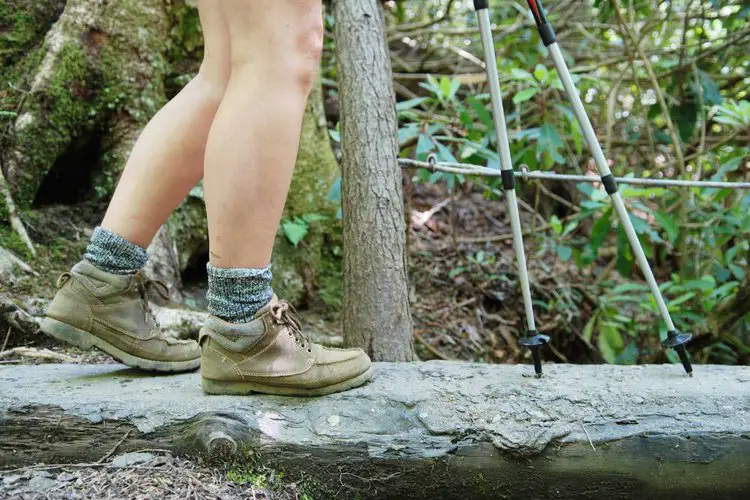
By using two hiking poles, you can also engage your upper body muscles more, which can help improve your overall endurance and reduce fatigue.
Another benefit of using two hiking poles is that they can provide extra stability and support on rough terrain. With two poles, you can maintain a more stable and balanced posture, which can reduce the risk of falls or injuries.
Additionally, two hiking poles can provide extra support when carrying a heavy backpack, as they can help distribute the weight more evenly across your body.
- BUILT TO LAST: Whether you're hiking on rugged terrain or the beaten path, you need hiking gear that...
- LIGHTWEIGHT: These hiking poles are crafted with strong aircraft-grade 7075 aluminum, tougher than...
- ADJUSTABLE: Set to your desired height in seconds, from the 54" max height down to just 24.5" when...
Last update on 2023-11-11 / Affiliate links / Images from Amazon Product Advertising API
Pros of using two hiking poles
- Using two hiking poles can provide better balance and stability, especially on steep or uneven terrain. This can help prevent falls and injuries.
- Two hiking poles can also help distribute your weight more evenly, reducing the strain on your body and helping you conserve energy.
- With two hiking poles, you can engage your upper body more fully in your hike, providing a more comprehensive workout.

Cons of using two hiking poles
- Carrying two hiking poles can be more cumbersome and tiring than carrying just one. This may be a concern for hikers who are carrying a heavy pack or who are already struggling with fatigue.
- Using two hiking poles can take some getting used to, as you’ll need to coordinate your movements and adjust your balance to incorporate both poles.
Ultimately, the choice of whether to use one or two hiking poles comes down to personal preference and the specific demands of your hike.
For most hikers, using two hiking poles will provide the best balance, stability, and support, especially on longer or more challenging hikes. However, for shorter or less strenuous hikes, or for hikers who have limited mobility or balance, using just one hiking pole may be a good option.
Here are some specific examples of when it may be more beneficial to use one pole or two poles while hiking
It’s important to note that everyone’s needs and preferences may vary, and what works best for one hiker may not work for another.
It’s always a good idea to experiment with different hiking pole setups and techniques to find what works best for you and your specific hiking needs.
When to use one hiking pole
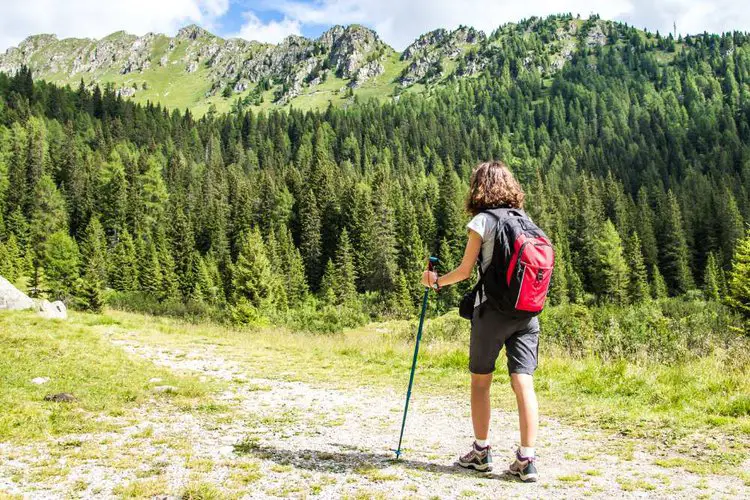
- On relatively flat terrain that does not require much balance support.
- You want to save weight and pack space by carrying only one pole.
- You want to feel more comfortable.
- Carry something in your other hand, such as a camera or water bottle, and only have one hand free to use a hiking pole.
- When dealing with a minor injury or imbalance on one side of your body, using one pole on the opposite side can help balance out the load and reduce discomfort.
When to use two hiking poles
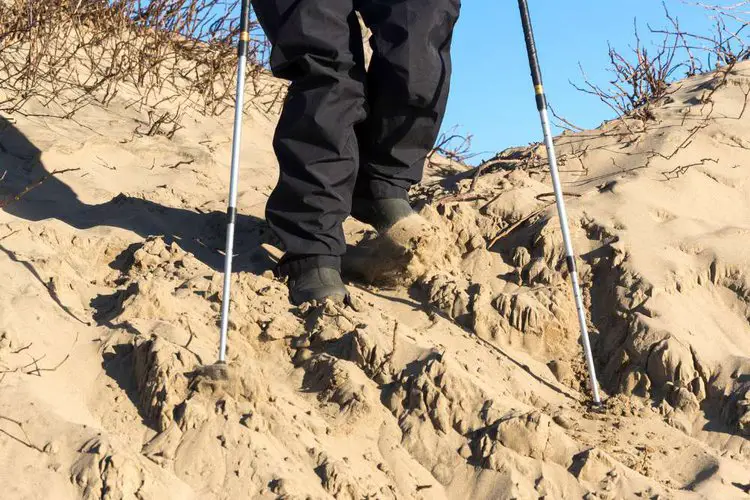
- When hiking on uneven terrain or steep inclines that require more balance and support.
- When carrying a heavy backpack or load, as the additional pole can help distribute weight and reduce strain on your back and knees.
- When dealing with knee or joint pain, using two poles can help reduce impact and pressure on your joints.
- When hiking in snow or icy conditions, as the additional poles can help provide extra stability and prevent slips and falls.
- When hiking long distances or for extended periods of time, using two poles can help reduce fatigue in your arms and upper body.
Conclusion
Hiking poles can be a valuable tool for hikers of all levels, but the decision to use one or two poles depends on a variety of factors.
By understanding the pros and cons of each option and considering your personal preferences and the conditions of your hike, you can choose the best option for you.
Remember to always practice proper technique and adjust your poles for maximum comfort and effectiveness on the trail.
Happy hiking!

